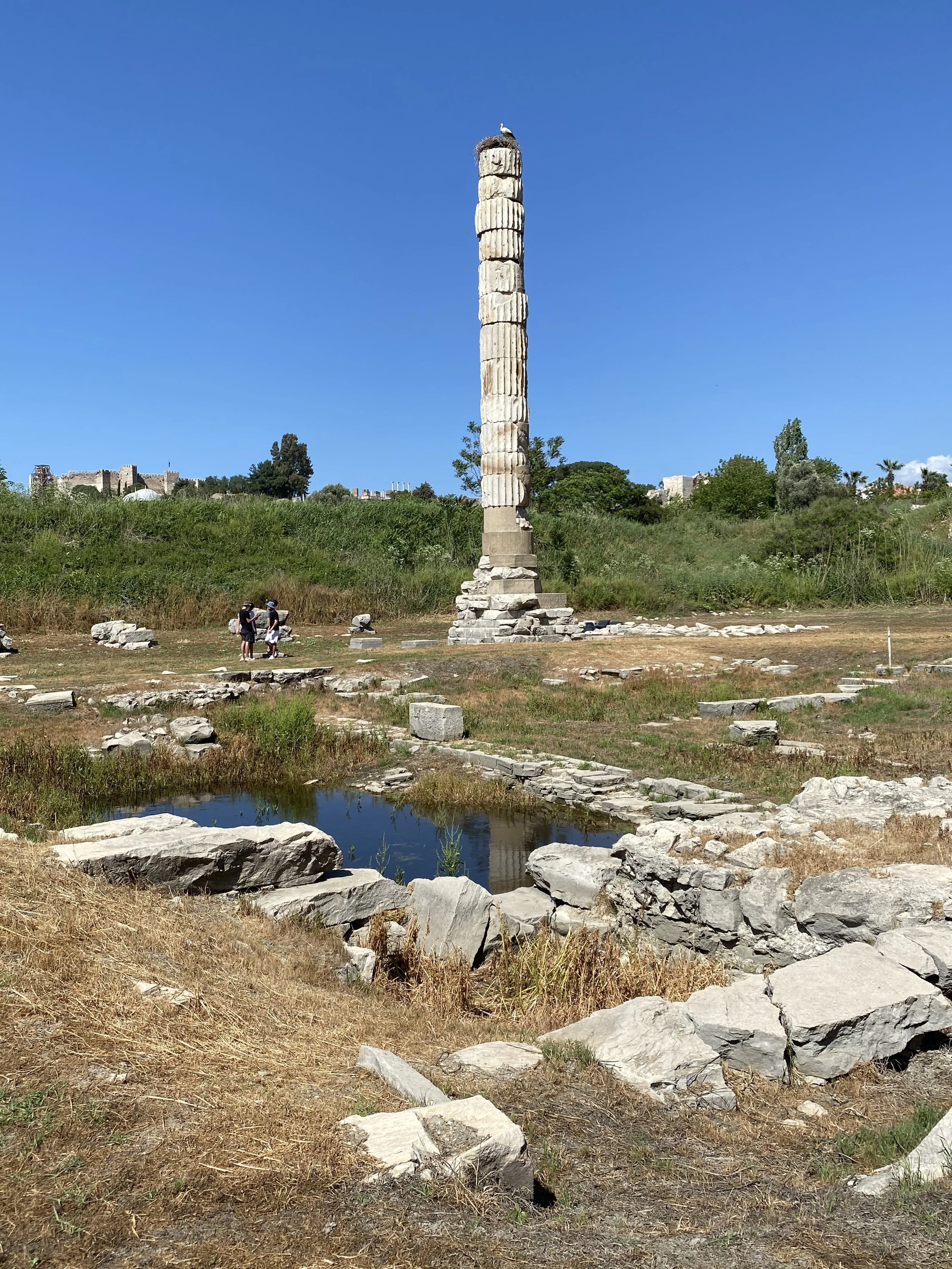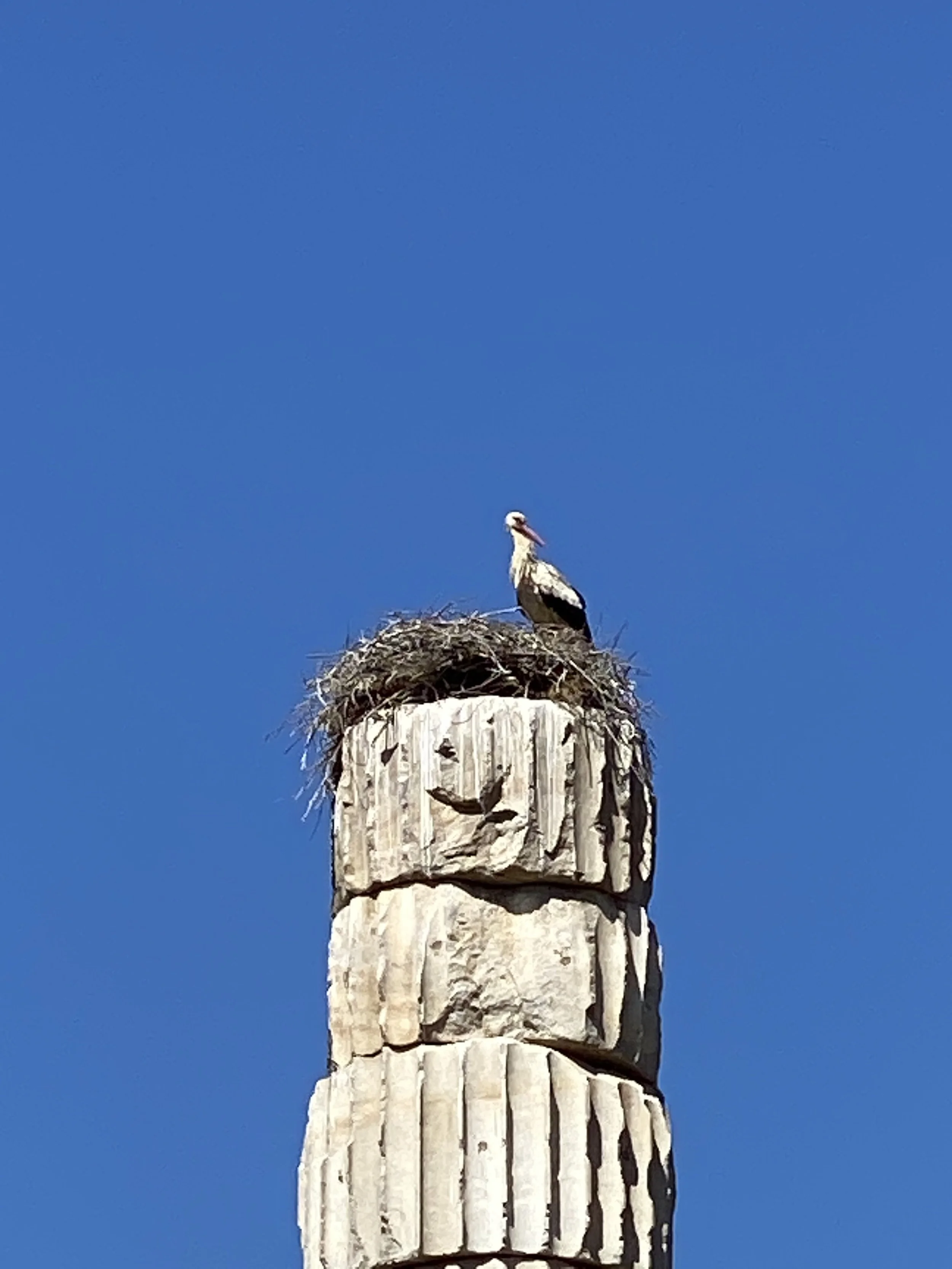Temple of Artemis, Ephesus Turkey - One of the seven wonders of the ancient world
“About that time there arose no little disturbance concerning the Way. For a man named Demetrius, a silversmith, who made silver shrines of Artemis, brought no little business to the craftsmen. ‘Men, ….you see and hear that not only in Ephesus but in almost all of Asia this Paul has persuaded and turned away a great many people, saying that gods made with hands are not gods...And there danger that ….the temple of the great goddess Artemis may be counted as nothing, and that she may even be deposed from her magnificence, she whom all Asia and the world worship’ ”. Acts 19:24-27
Paul was obviously doing something right to get Ephesian artisans worked up into a riot over fears of losing business should the worship of the goddess Artemis be supplanted by an understanding of the true God and the way of salvation through his son Jesus! Ephesus was home to one of the seven wonders of the ancient world - the great temple of Artemis.
Artemis was the greek goddess of the hunt, of nature, wildlife, and childbirth. Equivalent to the Roman goddess Diana. Artemis is often depicted as a young woman with bow and arrow surrounded by deer, nymphs and other wild animals. The Ephesian version of Artemis includes a breast plate of oval objects variously described as breasts, gourds, bull testicles, or just jewelry.
The site of the Temple of Artemis near Ephesus had religious significance back to the 7th century BC. The grand temple was first constructed in 550 BC by Croesus the king of Lydia (who also built the Sardis Artemisian temple). This temple was destroyed by arson and rebuilt in its grandest form (larger than the Parthenon in Athens) beginning in 323 BC. This version was present during Paul’s time in Ephesus. The temple had 127 columns, was made from marble, and hosted pilgrims/tourists from all over Asia Minor for grand processions through the city starting and ending at the temple. The temple also functioned as a banking center, a place of refuge, and a repository of records. Today we see part of one lonely reconstructed column still standing, stubs of pillars, a sunken area (pool or fountain?) all in a rather unimpressive looking swamp. Not looking at all like a wonder of the ancient world. Some remains from this site are in the British Museum.
In the upper city of Ephesus are remains of a building complex called the Prytaneion. This was a government center, a reception hall for elite and political visitors, and housed a holy fire maintained by a group of priests, the Curetes or Kouretes. These priests were also responsible for maintaining the Artemis temple. Inscribed on the columns of the building were the names of the priests and of other important citizens. Two statues of Artemis (now in the Ephesus Museum) were found here.
For more biblical travel photos and videos visit us at:
Temple of Artemis - one of the seven wonders of the ancient world - Ephesus, Turkey




















